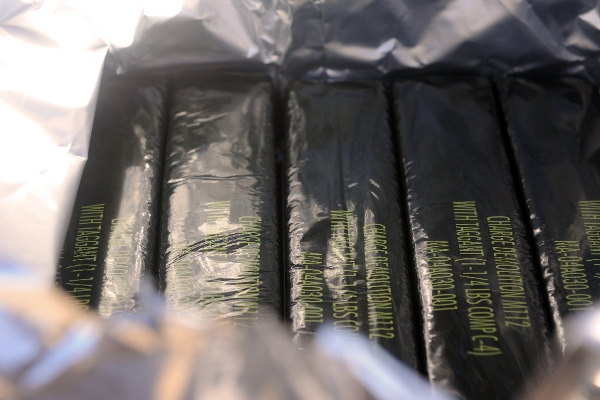In a development that could be of immense use in criminal investigations, Indian scientists have come up with a thermally stable and cost-effective electronic polymer-based sensor for rapidly detecting nitro-aromatic chemicals used in high-energy explosives.
The detection of explosives without destroying them is essential for criminal investigations, minefield remediation, and several other military and security-related applications. Chemical sensors play a vital role in such cases.
Though the explosive poly-nitroaromatic compounds can be analyzed very well using sophisticated instrumental techniques, the quick decision making in criminology laboratories or reclaimed military sites, or to trace explosives in possession of extremists often require simple, cheap, and selective field techniques which will be non-destructive in nature.
In a development that could be of immense use in criminal investigations, Indian scientists have come up with a thermally stable and cost-effective electronic polymer-based sensor for rapidly detecting nitro-aromatic chemicals used in high-energy explosives.
Non-destructive sensing of nitroaromatic chemicals (NACs) is, however, difficult. Earlier studies were based mostly on photo-luminescent property. Detection based on conducting property has not been explored so far.
A team of scientists led by Dr. Neelotpal Sen Sarma from the Institute of Advanced Study in Science and Technology, Guwahati, an autonomous institute of the Department of Science & Technology, Government of India, has filled the gap.
They have developed a layer-by-layer (LBL) polymer detector. The detector consists of two organic polymers — poly-2-vinyl pyridine with acrylonitrile (P2VP-Co-AN) and copolysulfone of cholesterol methacrylate with hexane (PCHMASH), which undergo a drastic change in impedance (resistance in an ac circuit) in the presence of even very low concentrations of nitro-aromatic compounds within few seconds. A chemical called picric acid (PA) was chosen as the model NAC, and a simple and cost-effective electronic prototype was developed for its visual detection. The study team has filed a patent for the novel technology.
The device can be operated at room temperature, has a low response time and negligible interference from other chemicals. The fabrication is simple and is negligibly affected by humidity.
You may also like
-
New Heat-Based Approach To Cancer Treatment Can Reduce Chemotherapy Doses
-
Scientists Take A Major Step Towards Unification Of Classical & Quantum Gravity
-
India Graphene Engineering and Innovation Centre (IGEIC) Under the Vision of Viksit Bharat@2047 Launched
-
New High-Performance Gas Sensor can Monitor Low Level Nitrogen Oxides Pollution
-
Antidepressant Drug can be Repurposed for Treating Breast Cancer
